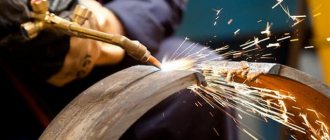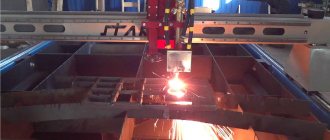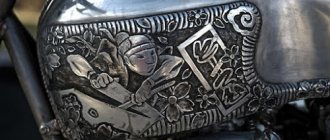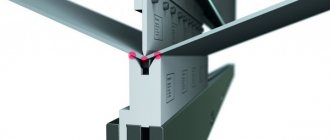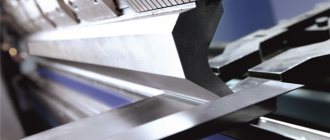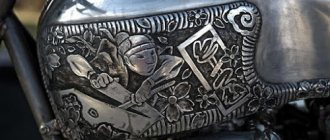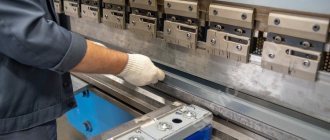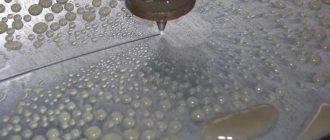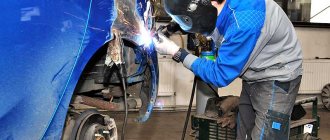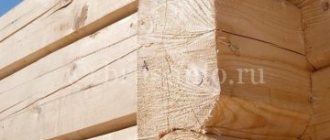One of the common technological procedures associated with metal processing is bending. This manipulation makes it easy to give the product the desired shape. Using special tools for bending metal, they create decorative elements, furniture parts, cornices and other details. The main advantage of this procedure
– the ability to easily obtain a suitable item.
In this case, the result is a seamless product that is difficult to deform or spoil. Its appearance and characteristics are preserved for a long time. Sheet metal bending
can be either manual or mechanical. Both options are advisable to use in different cases.
Tools for bending thin sheet metal allow you to perform work of varying levels of complexity. You can purchase similar equipment for bending yourself or contact us. The Ural Sheet Structures Plant performs high-quality bending.
Common Tool Types
Different types of tools and devices used in metal bending are aimed at performing complex and simple work. There is equipment intended exclusively for use in production, workshops and for use in small workshops. The choice of tool is also influenced by the thickness of the metal.
If we are talking about thin elements, then exclusively cold bending is used. In accordance with the types of parts with which work is most often carried out, equipment should be selected. The names of metal bending tools are different, as are their areas of use.
Most Popular Tool
for bending sheet metal at a factory - this is a machine. The following varieties are distinguished:
- electromechanical
– often used in mass production, suitable for miniature elements; - hydraulic
- used for elements made of particularly thick or durable metal, providing almost jewelry-quality work.
Separately, equipment and tools for metal bending
manually. The following are often used:
- hammers (light and heavy);
- sledgehammers, vices;
- pliers;
- manual sheet bending machines.
The choice of tinsmith's tools for bending sheet metal is also directly influenced by the characteristics of the material that will have to be worked with. For example, if we are talking about metal sheets whose thickness does not exceed 0.5 mm
, then it is advisable to use a light hammer.
If we are talking about thicker metal (8-10 mm)
, then you should give preference to a sledgehammer. Regardless of what type of equipment you use, you need to adhere to safety precautions and operating rules.
Bend a sheet without a bender
Let's look at several options that explain how to bend a sheet of metal at home.
As a hand tool for bending, we use a ruler, chalk or pencil, a vice, 2 wooden blocks, a steel angle and a rubber hammer. To bend a sheet of metal, it must be laid out on the work table so that the edge that should become curved protrudes beyond the table. First, the bend strip must be marked along a ruler. The fold marking should match the edge line of your desktop.
Cover the end of the table with a steel corner. Secure the metal sheet on both sides with a vice using wooden blocks. We begin to bend the protruding edge of the sheet, tapping it with a rubber hammer, gradually moving from one corner to another: first in one direction, then in the opposite direction.
We strike with a hammer until the bent edge completely goes down and lies flat on the steel corner, which is fixed at the end of the table. In other words, the angle should be 90 degrees. In this way you can bend sheets up to 2 mm thick.
For example, this is how you can make a box for a simple garden barbecue (the corners, of course, will have to be welded later).
Important tip: If you don't have a rubber hammer, you can use a regular one. Then you will need to beat off the edge through a wooden block or textolite plate. Only in this case there will be no hammer marks left on the bent edge.
Option 2
If you need to quickly bend a thin sheet of metal (0.8-1.2 mm), you can use ordinary pliers as a bending tool. You will also need a ruler, a pencil and a flat wooden block, as well as a rubber or durable wooden hammer. The sequence of actions is as follows:
- on a metal sheet we outline the edge of the future fold using a ruler (the line can be additionally pressed a little with a sharp object);
- We grab the edge of the sheet with pliers so that their ends fall exactly on the marking line;
- gradually moving the pliers along the markings, bend the edge upward;
- repeat until the bend angle approaches 90 degrees;
- To accurately align the angle, we “put” the bent sheet on a wooden block and beat it with a hammer until the exact geometry of the angle is obtained.
In this way, without a sheet bender, you can make, for example, an edge on a tin cast.
What tools are most often used for straightening and bending metal and wire?
Often craftsmen have a desire to purchase all the options for tools that are on sale. However, this is unwise. First you need to understand with what volumes of products
you plan to work. For example, if we are talking about a small workshop, then simple hand-held machines and tools will be quite sufficient. Such equipment can easily be taken with you to work on the road at various construction sites.
You also need to understand what types of material you plan to work with. If we are talking not only about thin sheet metal, but also about more massive products, you will need to buy productive machines.
If you need any metal work done, please contact us. The Ural Sheet Structures Plant carries out high-quality bending in Yekaterinburg. We have all the necessary equipment, as well as high-class craftsmen. The cost of bending ranges from ... to ... rubles. We work quickly and guarantee high quality.
Your own roller
There may be a need to independently manufacture a pipe from a metal sheet. Homemade pipes can be used for different purposes: as a chimney, air duct, samovar pipe, etc. Craftsmen have come up with many ways to bend sheet metal into a pipe. Let's look at some of the simplest options.
Option 1
Without having a special device for bending metal, you can roll a sheet into the shape of a pipe, using for this purpose either some kind of round blank or a ready-made piece of an old pipe. Most people use a pipe.
So, we lay out a sheet of metal on the surface of the earth or concrete floor. Now let's prepare a template onto which we will wind the metal. We weld two small tubes crosswise to both ends of the old pipe (perpendicular to each other). Their diameter must be sufficient to insert a crowbar. This will be our bending device. Next, we place the pipe on the edge of the sheet and begin to wrap the sheet around it. This work will require 3 people: one stands on the pipe, the other two use crowbars to rotate the pipe. Each rotation is performed 90 degrees. The crowbar is rearranged to 0 degrees.
So we gradually twist the entire sheet around the pipe and get several new cylindrical turns. Usually the very edge of the sheet remains straight. To bend it too, you need to use a wooden mallet or a rubber mallet as a metal bending device.
To get a pipe of the required diameter, use a measuring tape to measure the length of its circumference (to do this, multiply the diameter by 3.14) and cut off the required piece with a grinder. After this, we remove it from the workpiece and carry out welding work along the seam of your new pipe. In this way, you can make as many pipes as you like without using a special sheet bender.
Metal bending, tools and equipment used.
For straightening shaped, sheet and strip metal, various types of hammers, plates, anvils, rolls (for straightening tin), manual screw presses, hydraulic presses, roll devices and gates are used.
Bending of metal depending on its thickness, configuration or diameter is done with a hammer using metal tongs or blacksmith's tongs on a straightening plate, in a vice or in molds or on an anvil. You can also bend metal in various bending fixtures, bending machines, press brake dies, and other equipment.
A hammer is a percussion instrument consisting of a metal head, handle and wedge
The hammer is widely used in performing various plumbing operations; This is one of the main tools when performing locksmith work.
The metal part consists of the following elements: a wedge-shaped part, a slightly rounded butt (impact part) and a hole. The hammer handle is made of hard wood with a cross-section and length depending on the size of the hole in the hammer and its weight. After placing the hammer on the handle, a wooden or metal wedge is driven into it to protect the hammer from falling off the handle.
Hammers come with a round and square head. Bench hammers are made from tool carbon steel U7 or U8 (Table 1). The working part of the hammers is hardened to a hardness of HRC 49–56.
Straightening is the operation of returning crooked or bent metal products to their original straight or other shape. Straightening is done hot or cold manually, as well as using devices or machines.
Most often, wire, hot-rolled or cold-drawn rods, strip and sheet metal are straightened. Sectional metal (angles, channels, T-beams, I-beams and rails) undergoes editing less frequently.
A material or product made of non-ferrous metals should be adjusted taking into account its physical and mechanical properties with a hammer made of the appropriate metal. Hammers made of the following non-ferrous metals are used: copper, lead, aluminum or brass, as well as wooden and rubber hammers.
Flexible is the operation of giving metal a certain configuration without changing its cross-section and processing the metal by cutting. Bending is done cold or hot manually or using devices and machines. Bending can be done in a vice or on an anvil. Bending metal and shaping it can be facilitated by the use of templates, core molds, bending dies and fixtures. Bending a large number of metal rods to give them a specific shape is possible only in dies and bending equipment specially designed and manufactured for this purpose.
Rice. 12. Pipe bending device
The wire is bent at a certain radius or in a circle using round teeth, and when bending at a slight angle - with pliers; For complex bending, round teeth and pliers can be used simultaneously. In some cases, a vice is used when bending wire.
Pipe bending can be done hot or cold using special templates or rollers using bending devices (Fig. 12) or pipe bending machines.
Thick-walled pipes with a diameter of no more than 25 mm and a bending radius of more than 30 mm can be bent in a cold state without filling them with dry fine sand, lead, rosin and without inserting a coil spring into them. Pipes of large diameters (depending on the wall thickness and the grade of metal from which the pipe is made) are bent, as a rule, by heating the bending point and filling the pipe with the appropriate material. In this case, the ends of the pipe are plugged with plugs, which reduces the possibility of its breakage or flattening during bending. Pipes with a seam should be bent in such a position that the bending force is applied in a plane perpendicular to the seam.
Pipe flaring is the diametric expansion of the pipe ends outward in order to obtain a tight and durable press connection between the pipe ends and the holes into which they are inserted. It is used in the manufacture of boilers, tanks, etc. Flaring is performed mainly with manual flaring roller tools or conical mandrels.
A spring is a part that, under the influence of external forces, is elastically deformed, and after the action of these forces ceases, it returns to its original state. Springs are used in various machines, devices, machines and equipment. Springs are classified according to their shape, operating conditions, type of load, type of tension, etc. Based on their shape, springs are divided into flat, helical (cylindrical, shaped, telescopic) and conical. Based on the type of loading, they are divided into tension, torsion and compression springs. Springs are made with right or left winding, spiral disc, bent, flat, figured and ring.
The spring must support parts or assembly units of machines in a certain position, eliminate or calm vibrations, and also perceive the energy of a part or machine assembly in motion, make it possible to elastically suspend machine parts or counteract a certain force. The spring also serves as an indicator of a certain force. Springs are made of spring or spring steel. It can be high-carbon steel or alloyed spring and spring steel with the addition of manganese, chromium, tungsten, vanadium, and silicon. The chemical composition of spring and spring steel, heat treatment conditions, as well as mechanical properties are determined by the relevant GOST and technical specifications.
Springs are made by hand or by machine. One of the simplest manual methods is to make springs in a vice using a round rod with a handle with a diameter slightly smaller than the internal diameter of the spring, and special wooden cheeks inserted between the jaws of the vice cheeks. Helical springs can also be wound on drilling, lathe or special winding machines.
The length of round wire required for winding a helical spring is determined by the formula: L = πDcpn, (where L is the total length of the wire; Dcp is the average diameter of the coils of the spring (equal to the internal diameter plus the diameter of the wire; n is the number of coils.)
Rubber spring coupling is a type of spring. Rubber connecting spring parts are used in various machines, mechanisms and equipment for connecting shafts and a number of other parts operating under dynamic loads. They have the ability to receive and store energy, dampen vibrations and are used as flexible and elastic couplings.
Before installing a spring or a rubber connecting spring part, you should first check that the type, characteristics and quality of the spring comply with the drawing and technical requirements for assembling the machine or mechanism. A spring or rubber connecting spring part that does not meet these requirements or has mechanical damage will not ensure the operability of the machine or mechanism.
When straightening and bending metal, it is necessary to check the technical condition of the tools used, to correctly and accurately secure the material on a plate, in a vice or other device. The sleeves of clothing should be buttoned at the wrists, and mittens should be worn on the hands.
